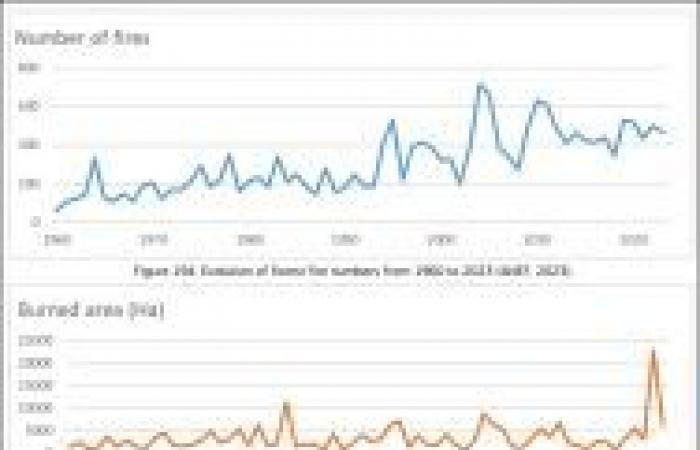Last year, Europe, the Middle East and Africa saw some of the worst wildfires since 2000. According to the 2023 Wildfire Report, released today by the Joint Research Center of the Commission, forest fires have affected more than 500,000 hectares of natural land, approximately half the area of the island of Cyprus.
In recent years, catastrophic wildfires have been common in the European Union and neighboring countries, 2023 was no exception. “Megafires” and wildfires have challenged traditional means of fighting fires, including a blaze near the town of Alexandroupolis in Greece's East Macedonia and Thrace region. It is the largest forest fire recorded in the EU since the European Forest Fire Information System (EFFIS) started tracking them in 2000.
The unprecedented wildfires that have swept Europe over the past four years show that the undeniable effects of climate change on wildfires are becoming more frequent and intense. This was underlined in the first ever European Climate Risk Assessment (EUCRA) and the Commission's Communication on Climate Risk Management in Europe published this year.
Climate change not only increases the size of areas affected by wildfires, but also makes individual fires more intense, extending the fire season beyond the traditional summer period and causing fires in areas that were previously generally not affected by them.
The high frequency and intensity of wildfires during prolonged fire seasons poses a new challenge for firefighting services in Europe and around the world, as aerial firefighting becomes more arduous and that ground operations become more difficult, if not impossible.
The preliminary assessment of the 2024 EU wildfire season through mid-September shows that the area burned by fires in the EU was lower than the average of the last two decades. This is mainly due to intermittent rainfall which affected much of the EU territory throughout the spring and summer.
In September, several forest fires broke out simultaneously in Portugal. The damage caused by forest fires in 2024 was thus higher than the EU average of recent decades. However, overall, 2024 can be considered a less severe wildfire season because it marks a slowdown in damage after three consecutive years of devastating fires.
The Commission and EU Member States are improving their fire prevention, preparedness and fighting capabilities, which would have helped limit damage across the EU this year.
To combat wildfires in Europe and globally, it is necessary to minimize the number of wildfire ignitions and manage the landscape in vulnerable regions, preventing the accumulation of fuel types at high risk and their spatial continuity. Nature-based preventive measures, such as promoting a less fire-prone tree species composition, allowing grazing by herbivores or prescribed burning, are effective in reducing wildfire risk, as well as integrated approaches to landscape planning.
According to the report, around 96% of wildfires in the EU are caused by human actions, meaning that education and awareness campaigns are a vital part of the solution. As the climate crisis worsens, it is essential that Europe's population prepares for more frequent and intense wildfires. Preventive measures must involve all segments of the population, including rural communities in direct contact with natural areas, as well as the particularly vulnerable population who live in the “interface between nature and the city”.







